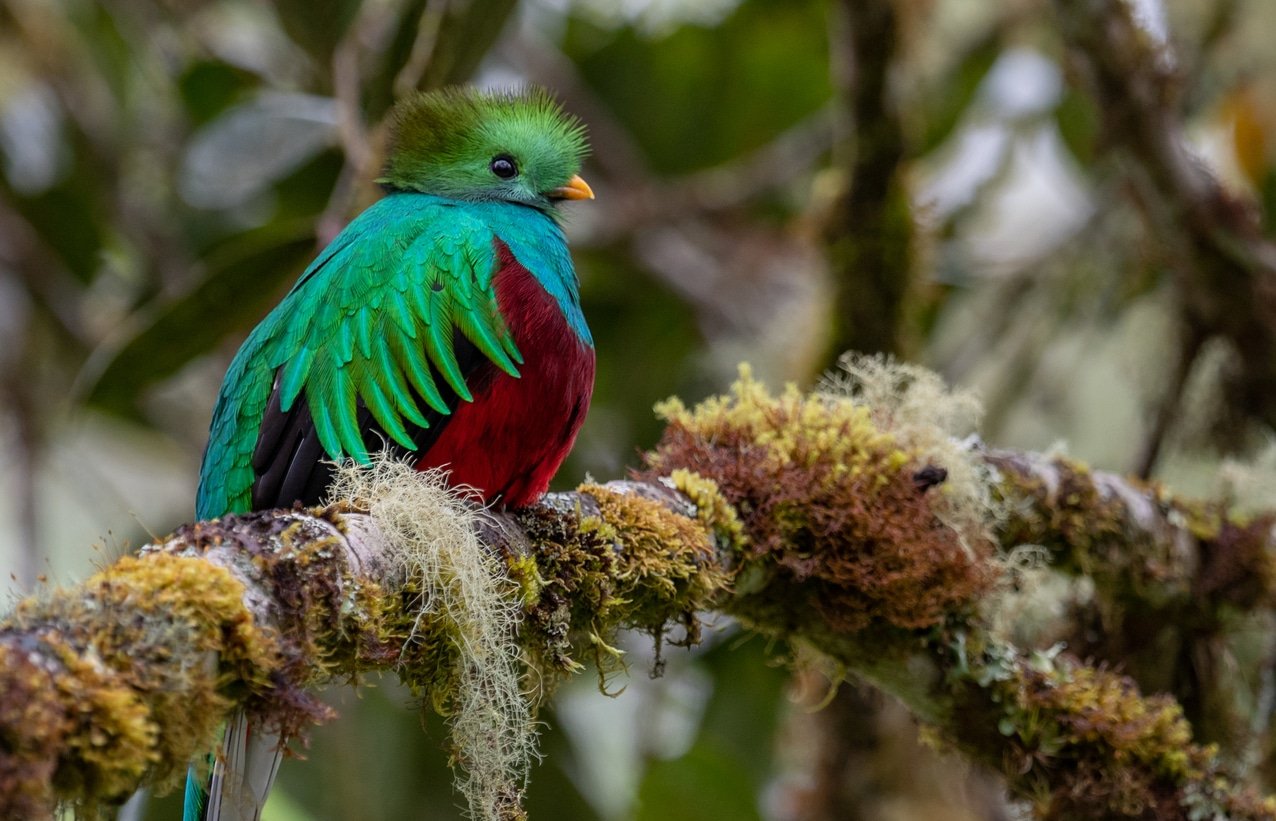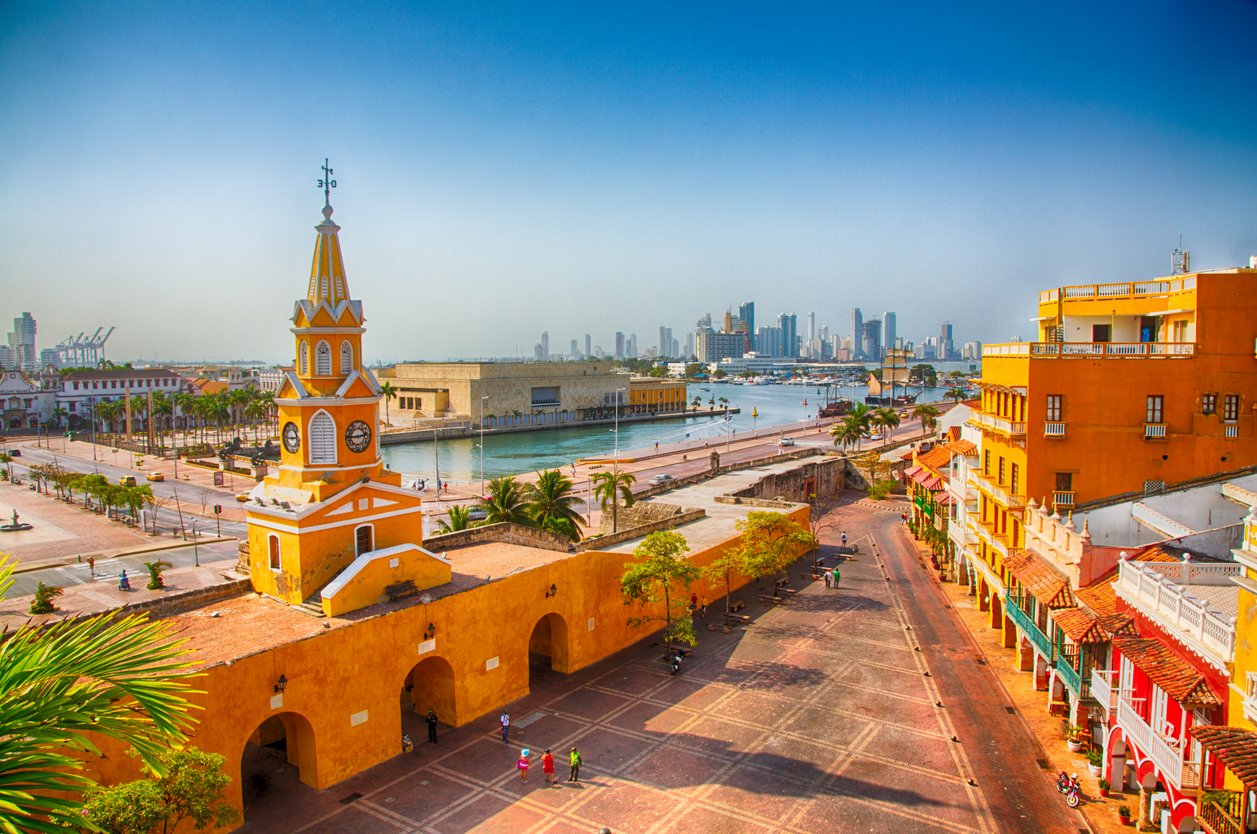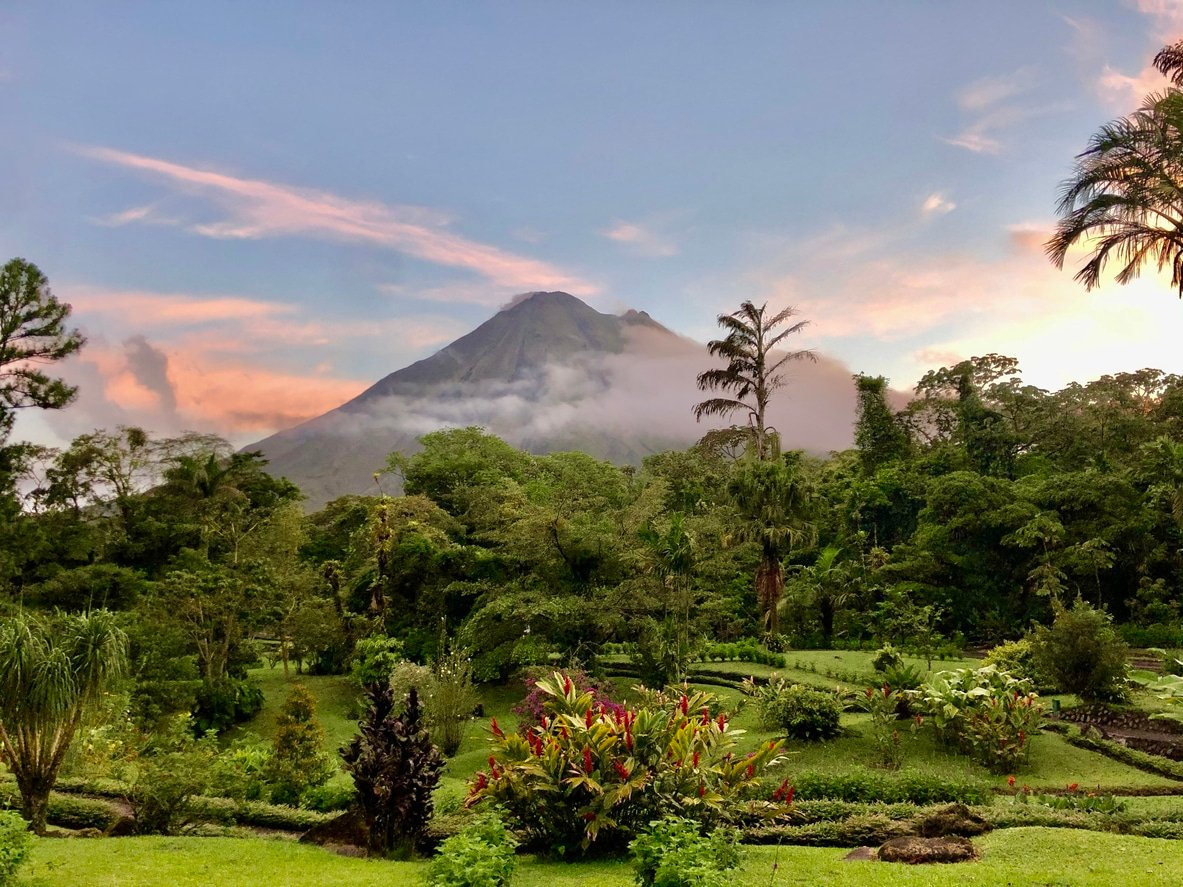Beautiful & Rare Birds of Costa Rica: Where To Find Them, Photos & More!
Costa Rica is an absolutely gorgeous country with so much to do! This is especially true for bird watching, as the country is filled with many unique and beautiful birds to find.
Did you know that Costa Rica is known to hold over 900 different bird species? You won’t have time to see them all, but you can certainly try!
To help you on your birdwatching journey, let’s start with 15 of the most beautiful and rare birds in Costa Rica and where you can have the most luck finding them.
This is only a small portion of all the birds Costa Rica has to offer, but even this list alone will take your breath away. Recommended: Incredible Hiking Trails in Costa Rica

1. Keel-billed Toucan
First up on our list of birds in Costa Rica you must see is the absolutely stunning Keel-billed Toucan.
This bird is probably the spitting image of what comes into your mind when you picture a toucan. With their dark back and sides, yellow chest, and beautiful multi-colored beak, it is no wonder bird watchers everywhere can’t get enough of these stunning creatures.
Luckily, Keel-billed toucans are still plentiful in the wild and can be found in a range of countries.
To find them in Costa Rica, look at forests at a middle elevation such as the Arenal National Park or Virgin del Socorro. These birds are known to be playful and silly, so an avid watcher might get a good show! The best time of year to see these beautiful specimens will be in the summer.

2. Fiery-billed Aracari
The Fiery-billed Aracari is a stunning member of the toucan family, recognizable by their long beak.
Yet the appearance of the Fiery-billed Aracari may surprise you: black, red, and yellow plumage with a pretty red and black beak. No wonder they have “fiery-billed” in their name!
These birds also travel and forage in groups of up to ten, so if you see one make sure to look around for its companions.
The population of this lovely bird is sadly declining, although they are not yet a species of concern. This bird breeds only in southern Costa Rica and western Panama, making habitat loss a grave threat.
You’ll be most likely to see these birds in areas of low to middle elevation such as Manuel Antonio National Park or the Oro Verde Biological Reserve.
Visit in the late spring and early summer for increased chances of a sighting!
3. Mangrove Hummingbird
While there are technically over 80 bird species that are nearly endemic to Costa Rica, there are only six that are completely endemic. This means they can only be found in Costa Rica, and one of these is the stunning Mangrove Hummingbird.
These birds have striking green coloring on their heads, and dappled brown plumage with a darker tail. As hummingbirds, they can be hard to spot; but when you do, what a treat!
Unfortunately, the Mangrove Hummingbird is endangered with a steadily decreasing population.
At this time, they can only be found in the mangroves along the Pacific coast of Costa Rica. If you see one, you definitely got lucky with a sighting of a fantastic bird.
4. Coppery-headed Emerald
Similar to the Mangrove, the Coppery-headed Emerald is a hummingbird with exquisite coloring. As the name suggests, they are covered in brilliant emerald feathering that slowly gives way to a head colored in copper.
The Coppery-headed Emerald is also endemic to Costa Rica, so seeing it truly is a once in a lifetime opportunity. You certainly won’t forget it.
This bird can be found in lower to middle elevation, and has been regularly spotted at sites such as Monteverde or Mirador Cinchona.
Search for highly flowered areas to increase your chances of spotting a Coppery-headed Emerald feeding on nectar.
As such, mid to late spring and into summer are the best times to find one of these beauties in your sights.
5. Black-cheeked Ant-Tanager
Next up on our list is another of the only six species endemic to Costa Rica. The Black-cheeked Ant Tanager is a member of the cardinal family, and is commonly found in the jungle undergrowth.
These birds have dark feathers on their sides, back, and heads but a striking orange stomach, making them truly exciting to see.
The Black-cheeked Ant Tanager is officially endangered, meaning there are less than 2,500 mature members of this species living in the world.
You will find this bird exclusively in the rain forests of the Osa Peninsula, where their distinctive and noisy call can be heard. With practice, you’ll learn to identify and follow their unique voice.
They breed between January and March, making early spring a good opportunity to see them.
6. White-throated Magpie Jay
The White-throated Magpie Jay is the Central American member of the magpie-jay family.
They are known for their distinctive “spikes” or feathers curling off the top of their head. The back of these birds is a light blue, while the stomach and chest are a lovely white.
Magpie-jays are known to be loud and travel in big groups, so finding one of these stunning birds shouldn’t be a problem!
The white-throated Magpie Jay is not threatened or endangered, making it easy to find at a variety of sights from the Manuel Antonio National Park to the Osa Peninsula.
Listen for their familiar call and you might even see an entire flock! Early spring to late summer will be an ideal time to see these lovely birds.
7. Orange-bellied Trogon
If you’re looking for a truly stunning bird, look no further than the Orange-bellied Trogon!
This bird is a subspecies of the collared Trogran, and measures only about 10 inches or 26 centimeters long.
Males are wonderfully multicolored, with a green head and chest and orange underparts. If you see one, you’ll certainly be amazed.
Don’t worry about this bird, as the population is not considered to be of concern.
It can be found primarily in Talamancan Montane forests of Costa Rica, preferring a tropical forest habitat.
This species breeds from January to May, making that the ideal time to see if you can spy them in all their glory!
8. Scarlet Macaw
The Scarlet Macaw is without a doubt a truly lovely and stunning bird. These large parrots are known for their gorgeous collection of red, yellow, and blue feathers.
The Scarlet Macaw was once a common sight in Costa Rica and other countries, but their numbers have been dwindling. Experts say there could be less than 1,500 of these majestic creatures left in the wilds of Costa Rica.
This is one of the largest macaws, and they stick to the Pacific Slope area of Costa Rica. Check out the Osa Peninsula, specifically Corcovado National Park, and the Caracara National Park.
If you’re lucky, you’ll see these Costa Rica birds and they will stop you in your tracks!
9. Red-throated Caracara
The Red-throated Caracara is a gorgeous bird from the falcon family. They are unique among other caracaras for their black and white plumage and deep red faces and heads.
Despite being part of the falcon family, they mainly eat larvae from bees and wasps by attacking nests. Catching a Red-throated Caracara feeding is definitely an example of a dinner show!
They prefer subtropical and tropical habitats, such as lowland forests or moist montane forests. There have been several sightings in the forests of the Osa Peninsula, including in the aptly-named Caracara National Park. Give it a visit and try to see this stunning bird in action.
10. Resplendent Quetzal
The Resplendent Quetzal is one of the most sought-after birds from experienced watchers all over Costa Rica. This is for good reason, as the bird absolutely lives up to its name!
Their feathers reflect green light, causing their head, backs, and wings to appear as a brilliant green. Catching a glimpse of this rare and elusive bird will be the highlight of any trip!
Resplendent Quetzals are sadly decreasing in the wild, and have a Near Threatened status due to habitat loss.
The best places to see one will be in the Monteverde Cloud Forest and the Los Santos Forest Reserve.
Their breeding time is between February and June, so visit then for an increased chance of a sighting. Males grow longer tales during breeding season, making them easier to spot.
11. Yellow-billed Cotinga
Yellow-billed Cotingas are a stunning member of the Cotinga family, and they stand out from other jungle birds.
Their snow-white coloring and bright yellow beaks contrast beautifully, and a sighting means you got truly lucky!
These beautiful birds are classified as endangered, with less than 1,000 living in the wild. Some experts fear that number may be even lower, with less than 750 left.
Your best chances of seeing a Yellow-billed Cotinga will be through searching the Osa Peninsula which is home to the Yellow-billed Cotinga Sanctuary.
These birds are unique in that they require mangrove forests for nesting and tropical forests for fruit, so their habitats have dwindled as a result.
12. Blue-crowned Motmot
As the name implies, the Blue-crowned Motmot is a beautiful bird with a striking blue head and green plumage. Their intense blue crown is what separates them from other members of the motmot family.
These lovely Costa Rica birds can be found in several different countries, although experts estimate they are the most widespread in Costa Rica.
These birds prefer a wide variety of settings, from rainforests to shady farms. This means that they can be found all over Costa Rica, from the Osa Peninsula to Manuel Antonio National Park.
Breeding season begins in March, making this the start of the best window to see these stunning birds.
13. Golden-browed Chlorophonia
The Golden-browed Chlorophonia proves that great things come in small packages! This stunning bird may be small, but its vibrant coloring certainly packs a punch.
The plumage on this species varies from light green to yellow, with the famous “golden brow” appearing on their head. You’ll be happy you managed to spy this lovely bird!
The Golden-browed Chlorophonia is on the Red List for population, meaning it is not of primary concern but that the population is decreasing at a high rate. This means you should seize your chance and see this lovely bird while you can.
They are most likely to be found in the lower foothills and mountains, such as the Monteverde Cloud Forest Reserve and the Bosque de Paz Biological Preserve.
14. Great Curassow
The Great Curassow might seem different from other birds on this list, but it is a stunning find all the same. They are pheasant-like ground nesters, known for their large size and for the spiked headdresses that males possess. The coloring of a male Great Curassow is striking, with light brown feathers and a striped tail.
These birds have a Vulnerable status, meaning their population has severely decreased. This is partially due to the fact that they reproduce very slowly, despite their long life span of over twenty years.
You’ll be most likely to find a Great Curassow along Costa Rica’s North Pacific Slope in areas such as the Palo Verde National Park.
15. Cocos Finch
The Cocos Finch is so named because it is endemic to the Cocos Island in Costa Rica. The Cocos Finch is also considered one of Darwin’s finches, and the only one he studied that is not native to the Galapagos.
These birds are known for their round appearance, and the fact that males are almost entirely black while females have stunning brown streaks.
This species has a Vulnerable status, and can only be found on the Cocos Island. This makes every sighting a special occasion!
They have a shorter breeding season, lasting from January to March, so make sure to see one while you can!
Go Forward & See The Beautiful Birds Of Costa Rica!
There you have it! These are only 15 of the most beautiful birds that you can find across Costa Rica, but they’re the ones that should be top of your list. Be ready to take plenty of pictures when you visit!








